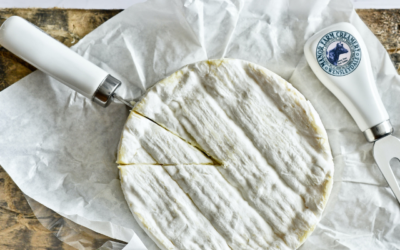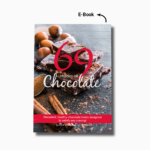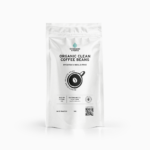In the past decade, science and our clinical knowledge of the microbiome has been exponential in our understanding of nutrition.
With the microbiome, we know many species and we know what makes them thrive and what kills them.
But, let’s take a step back from our current knowledge and go back in time before we knew anything.
When I studied nutrition and anatomy in the 1980’s, I honestly do not remember any subject that talked much about the microbiome. I did do microbiology, but, thinking back, there was no mention of a microbiota.
Our knowledge is new, but the microbiome is an ancient part of our humanness and our survival. We as a species are a community that is 10% human mammalian cells and 90% bugs.
I’ve noticed thousands of products on the market said to improve the microbiome. On the market to help this wave of chronic gut issues are probiotics (general and specific), synbiotics, prebiotics, postbiotics, sporebiotics, soil-based probiotics and any combination of the listed. This has been predicated because we are destroying the fabric of our very being with antibiotics, medications, chlorinated water, environmental chemicals, agricultural systems and chemicals, food additives and poor lifestyle choices.
Our safety assessment for the thousands of chemicals in the environment and food additives was set in 1987 without the microbiome ever being tested – only mammalian cells were the benchmark for toxicity and safety. All chemicals and food additives have been tested singularly rather than in combination. In essence, all safety assessment is outdated and many of the chemicals and food additives are possibly decimating our microbiome and therefore our health.
Roundup’s active ingredient glyphosate is a prime example. It has been tested on mammalian cells and shown to be safe, but when it comes to plants and microbes, this chemical decimates anything that has a shikimate pathway. Human cells do not have this metabolic pathway, but the microbes that live within us do and the plants we eat do.
The shikimate pathway makes aromatic amino acids, vitamin K, B vitamins, folic acid, enterobactin (iron carrier) and co-enzymes. Without these components we will be limited in our mental and physical health.
This agricultural and backyard chemical has been on the market since 1975. The consequences of this chemical on soil health, animal health and human health has prompted tens of thousands of lawsuits against the manufacturer. And that’s just one chemical in the 80,000 plus chemicals poured onto our planet and food.
Now we have a crisis, a human health crisis, where it has been noted that approximately 75% of the US population has a gut issue. No doubt around the world this will not be much different especially in countries where modern day life is impacted by these thousands of untested chemicals.
Enter anything that will save the microbiome. Let’s take a look at some of the products on offer.
Probiotics
We originally simply thought that if the bug is missing, then just eat it. But that simplified thought process over years has proven not to do the job. Dr Libby Weaver researched, over a six-year period, what happened when people consumed certain bugs and noted no significant improvement in the population of the species being taken. The problem is the acidic environment of the stomach, it has a knack of killing microbes – that’s it’s job!
Faecal Microbial Transplants (FMTs)
Next came faecal microbial transplants. The bugs entering the body do not go via the stomach but rather via the anus. The problem with this form of trying to increase the diversity and health of the microbiome is that if the environment is hostile the bugs that are inserted may not thrive, upscale in population or even survive. While it does have merit, it is not the silver bullet.
Sporebiotics
Then we have the spore-based probiotics, which have an exceptional outer layer that helps them survive in the environment and survive the stomach acid. The spores are resistant to heat, cold, radiation, desiccation and disinfectants. These sporebiotics have stood the test of time. They were first recognised after the second world war and were put into pills and marketed from 1956. Many of the soldiers in Africa would get dysentery so they were told by the Bedouin tribe to consume dried camel dung to cure their dysentery, which it did.
The camel dung was taken back for study and the spore-based bacillus gene from the firmicutes phylum was found.
Prebioitics
Another trend is the prebiotics (food for microbes) without probiotics (microbes for microbes) as it seems that probiotics are just not increasing the health and diversity of the microbiome as we had hoped.
Registered names such as Livaux, Bimuno and PreticX are all seen in preparations for gut health. Livaux is a fructooligosaccharide (FOS) extracted from kiwi fruit. Bimuno is a glactooligosaccharide (GOS) extracted from cow milk and PreticX is a xylooligosaccharide (XOS) extracted from corn cob. Each one of these feeds a particular bacteria in the microbiome respectively: Faecalibacterium Prausnitzii, Bifdobacteria, Akkermansia Muciniphilia.
These are all made with extracts from food that we eat on a regular basis. Perhaps eating the food may be a cheaper and better source of prebiotic than extracts. Although I admit when people are very sick these may be a great start for them.
Soil-Based Probiotics
Soil-based probiotics have a structure that makes them hardier than lacto and bifidus-based probiotics. Soil-based probiotics are part of the bacillus family. Therefore, soil-based probiotics survive the journey through the stomach and onward (this is due to the formation of endospores, which can withstand stomach acid, bile salts and pancreatic enzymes that would normally destroy the bacteria), thus making it to the distal part of the small intestine and onward to the bowel.
Postbiotics
Postbiotics are defined as a preparation of inanimate (dead) micro-organisms and/or their components that create a health benefit for the host. Effective postbiotics must contain inactivated microbial cells or cell components, with or without metabolites (products made by the microbes, such as butyric acid) that contribute health benefits. Postbiotics are also known as paraprobiotics, parapsychobiotics, ghost probiotics, metabiotics, tyndallized probioitics and bacterial lysates.
Postbiotics are more stable in a variety of preparations including food and cosmetics. They are not challenged by stomach acid and digestive enzymes and are able to contribute to the health of the microbiome. Research has shown that heat-treated bacteria can be beneficial in many health areas including gastrointestinal health, immune function, asthma and allergies, atopic dermatitis, eczema and eye fatigue.
We’ve added postbiotics to our probiotic blend as a natural preservative or stabiliser, ensuring maximum absorption and benefits from the pre and pro biotics in the blend!
The above are all pills and powders that can be found on the market or through practitioners. They all have their pros and cons.
But how did the human race survive without all of these pre- and probiotics potions before we decimated the microbiome?
The plant foods we ate were our prebiotics, which in turn had soil bacteria on them. We had no means of sterilisation like we do today, we just had water to take the dirt off, but the microbes that live within the soil and help us digest the food would have been on the plant food we ate. In order to preserve plant foods, fermentation methods were part of the culture using salts, sea water, sugar, as well as other means like soil-based microbes. In these preparations postbiotics (dead microbes) would have been a given.
Herding societies learnt how to ferment the products from animals into yogurts, kefirs, cheeses, cultured foods, soured milks and so on. In deserts, roots of plants would be used as they had the soil-based bacteria. Other cultures allowed the milk or grain to stand in the atmosphere to allow air-borne microbes to be part of the fermentation. Sourdough breads are a great example – the heating process would have accumulated more postbiotics.
It seems every culture that still exists today had some sort of fermentation whether it was fermented fish, meat, animal products or plants. This in turn increased the microbes and metabolites in the daily food intake.
Variety, seasonality and locality all addressed the rich diversity of food and rich diversity of the microbiome.
At this point we have addressed the prebiotics (diversity of food), probiotic (soil-based) and symbiotic (fermentation of foods) and postbiotics. Lastly, we have sporebiotics.
If you remember it was the Bedouin tribe in northern Africa that taught the soldiers in the second world war to eat dried camel poo for their dysentery. Does that mean we all need to become coprophages (faeces-eaters) or is there another way we can find these healthy sporebiotics? Well, it seems there is.
Nature has an abundance of these wonderful sporebiotics. When you walk in nature away from cities and urban areas and you breathe ancient forests and touch the flora you are getting a dose of sporebiotics. When you put your hands in healthy soils to grow your own food, you are being touched by sporebiotics and soil-based probiotics. When you pick your lettuces, wash the dirt off and consume them in a salad, you are giving your body an abundance of soil-based microbes. These in turn help you digest that lettuce and contribute to the wonderful metabolites that they produce for your health and wellbeing.
Our Probiotic Blend is unlike anything on the Australian market. Through extensive research, I have discovered a plethora of issues with most probiotics currently available, many are made in Petrie dishes, genetically modified and with no prebiotics (the actual food that the probiotic lives on and eats), and while most claim to be manufactured in Australia (referred to as ‘finished products’ – Ready for retail), the actual functional probiotic ingredient is always sourced from overseas. To top it off, most were packaged in capsule form, some of which can contain artificial properties (most definitely NOT mine or the Changing Habits way).
To put it simply, our prebiotics, probiotics and postbiotics are made from real food, sourced from real places (never in a lab), free from colours, flavours and preservatives. Each one of the ingredients has a touch of its own soil-based bacteria and postbiotics, which we cannot calibrate – just like we can’t calibrate it when we eat a lettuce, sweet potato, carrot or beetroot from healthy soils which all have their soil-based bacteria that are helping our microbiome to be healthy.
A crisis in health and gut issues may need non-plant-based extracted probiotics and prebiotics, especially if the person is highly sensitive to many foods and their components. But for people who want to maintain a healthy gut, here are 10 steps to help you maintain a healthy microbiome and, thus, a healthy mind and body.
10 Steps to Improve the Microbiome
1.Remove all foods that could be destroying the microbiome including foods grown with chemicals (glyphosate, etc), ultra-processed foods, like breakfast cereals and mass-produced breads, any food that contains emulsifier, preservative, colours, flavours, acidity regulators, vegetable oils, antibiotics (animals) and any food where the label looks like it came from a chemical laboratory.
2.Remove high sugar foods; these foods have a knack of feeding pathological microbes and starving keystone microbes. Lollies, cakes, biscuits, candy, especially the ultra-processed kind, can be damaging particularly when there is already dysbiosis. Also remove high sugar, alternative-sweetened and one-calorie (artificial sweeteners) content drinks, especially juices, soda drinks and mixers
3.Drink filtered water free from chlorine. Chlorine is in the water supply so that you get water that is not contaminated with microbes. The problem is that when you drink the chlorinated water, you destroy the bugs that you need. Try and find a filter that takes most of the chlorine out.
4.Look at the medications you are taking. Find out what medications may be affecting the microbiome. These will include antacids, PPI’s, NSAIDS, cardiac drugs, statins, cancer therapies and antibiotics to name a few. It is estimated that at least 50% of over-the-counter and prescribed medications have some effect on the microbiome, or that the microbiome affects their efficacy. If any medications can be cut down (make sure you talk with your doctor about this) then make some changes to your lifestyle. If they can’t be cut down, then follow these 10 steps or seek the advice of a nutritionist or naturopath who understands the plethora of probiotic pills and powders on the market.
5.Have a diet of real foods, plant and animal based. Each meal should be feeding your microbiome. Plants are best at doing this, so make sure you have a wonderful variety of fruit and vegetables, organic legumes and grains cooked and/or fermented (if you can tolerate them), nuts, seeds, herbs and spices.
6.While plants will feed the microbiome, animal-based products can nurture the gut lining. Start making slow-cooked meat dishes, chicken soup with stock made from bones, hearty broths from bones, marrow, fermented dairy (if you can tolerate) and healthy ghee.
7.Include the Nature’s Mineral Boost and Peak Performance into your regular routine. The Nature’s Mineral Boost come from fulvic and humic acids, which have been shown to help the digestive tract reverse the effects of glyphosate – just a capful a day is all you need. Our Peak Performance has a mix of our organic Probiotics (explained above), Supreme Green Blend, Camu Camu and healing herbs in order to heal and seal the gut while feeding the microbiome. Or you can just make sure that every day you take the Changing Habits Organic Probiotics.
8.As much as you can, go out into nature, get some sunshine and breathe in the spore bacteria that will help increase keystone strains of microbes in the microbiome and decrease pathogenic strains. Every environment has different types, so move in as many natural environments as you can. The prescription for medications should decrease and the prescription for nature should be a must. Breathe in your biome as so famously quoted by Dr Zac Bush.
9.Grow your own food. Start with making your soil healthy, then get your hands dirty and start planting seedlings and/or seeds. Hands in the soil and eating your home-grown foods will ensure a good supply of healthy soil-based bacteria in the diet. Beware of soil with chemicals as this can destroy healthy soil-based bacteria and create a plethora of listeria. Remember healthy soil, healthy microbes. The Nutrition Academy has The Incredible Edible Garden on its platform. It is a wonderful course to teach you how to grow food no matter where you live starting with healthy soil.
10.Consume fermented foods. There is a plethora on the market or you can make them yourself. Sauerkraut, kimchi, yoghurts (plant and animal based), kefir, kombucha, beet kavas, pickles or anything your heart desires. The trick is to read the ingredients because, like any food that becomes popular, they become commercial and they may not be fermented the right way or they may be full of additives. Here are some recipes to help you on your way:
Cyndi O’Meara
Founder, Changing Habits








0 Comments